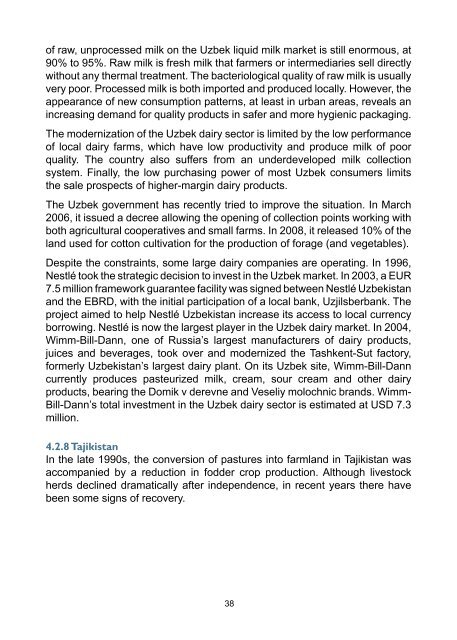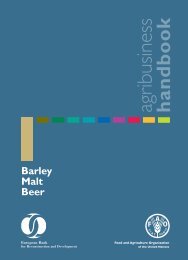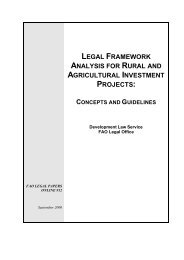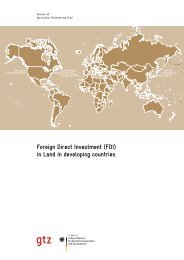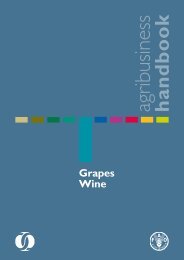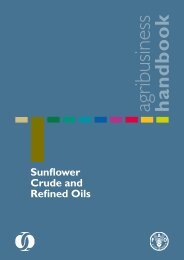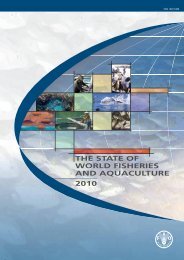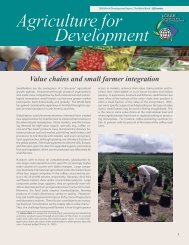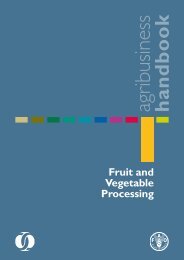Agribusiness Handbook: Milk / Dairy Products - FAO
Agribusiness Handbook: Milk / Dairy Products - FAO
Agribusiness Handbook: Milk / Dairy Products - FAO
Create successful ePaper yourself
Turn your PDF publications into a flip-book with our unique Google optimized e-Paper software.
of raw, unprocessed milk on the Uzbek liquid milk market is still enormous, at<br />
90% to 95%. Raw milk is fresh milk that farmers or intermediaries sell directly<br />
without any thermal treatment. The bacteriological quality of raw milk is usually<br />
very poor. Processed milk is both imported and produced locally. However, the<br />
appearance of new consumption patterns, at least in urban areas, reveals an<br />
increasing demand for quality products in safer and more hygienic packaging.<br />
The modernization of the Uzbek dairy sector is limited by the low performance<br />
of local dairy farms, which have low productivity and produce milk of poor<br />
quality. The country also suffers from an underdeveloped milk collection<br />
system. Finally, the low purchasing power of most Uzbek consumers limits<br />
the sale prospects of higher-margin dairy products.<br />
The Uzbek government has recently tried to improve the situation. In March<br />
2006, it issued a decree allowing the opening of collection points working with<br />
both agricultural cooperatives and small farms. In 2008, it released 10% of the<br />
land used for cotton cultivation for the production of forage (and vegetables).<br />
Despite the constraints, some large dairy companies are operating. In 1996,<br />
Nestlé took the strategic decision to invest in the Uzbek market. In 2003, a EUR<br />
7.5 million framework guarantee facility was signed between Nestlé Uzbekistan<br />
and the EBRD, with the initial participation of a local bank, Uzjilsberbank. The<br />
project aimed to help Nestlé Uzbekistan increase its access to local currency<br />
borrowing. Nestlé is now the largest player in the Uzbek dairy market. In 2004,<br />
Wimm-Bill-Dann, one of Russia’s largest manufacturers of dairy products,<br />
juices and beverages, took over and modernized the Tashkent-Sut factory,<br />
formerly Uzbekistan’s largest dairy plant. On its Uzbek site, Wimm-Bill-Dann<br />
currently produces pasteurized milk, cream, sour cream and other dairy<br />
products, bearing the Domik v derevne and Veseliy molochnic brands. Wimm-<br />
Bill-Dann’s total investment in the Uzbek dairy sector is estimated at USD 7.3<br />
million.<br />
4.2.8 Tajikistan<br />
In the late 1990s, the conversion of pastures into farmland in Tajikistan was<br />
accompanied by a reduction in fodder crop production. Although livestock<br />
herds declined dramatically after independence, in recent years there have<br />
been some signs of recovery.<br />
38


